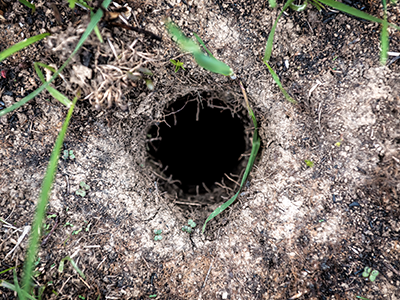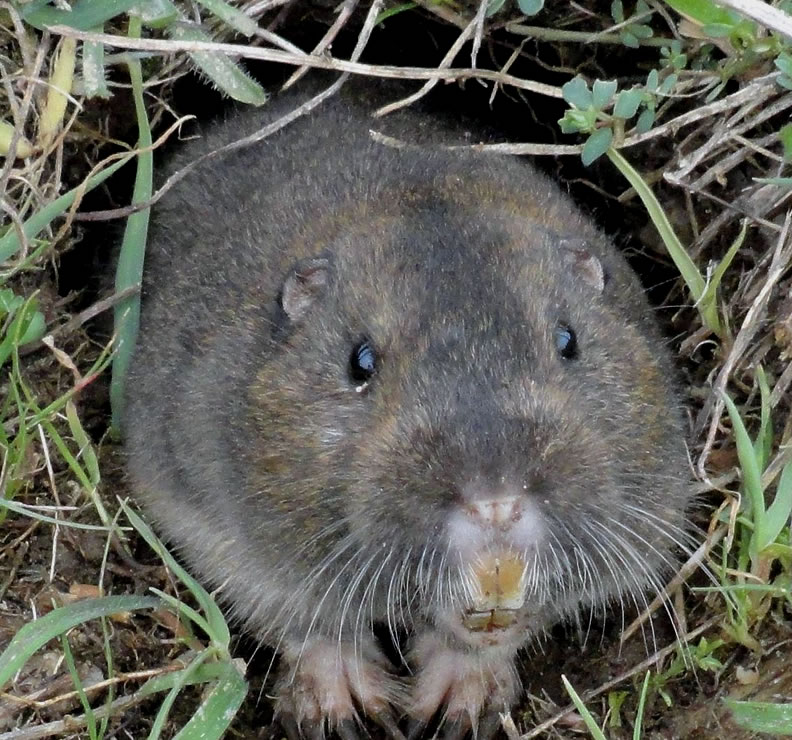Ultimate Insect Control Solutions for Taking On Persistent Gopher Invasion Issues
In the realm of parasite control, gophers present a special difficulty due to their relentless nature and harmful practices. By checking out a thorough strategy that encompasses understanding gopher actions, using specialized capturing approaches, using repellents, and adopting long-lasting avoidance tactics, a path towards efficient gopher administration emerges.
Recognizing Gopher Actions Patterns
Evaluating gopher behavior patterns provides important insights into their preferences and routines, aiding in the development of efficient insect control techniques. Comprehending just how gophers act is important in developing successful bug monitoring plans.
Gophers are burrowing rodents understood for their substantial tunneling tasks. gopher yard damage. By observing their actions, scientists have actually found that gophers are territorial animals, with each gopher generally populating its own passage system. These tunnel systems offer different purposes, consisting of nesting, food storage space, and defense from killers
Moreover, gophers show particular feeding patterns, preferring roots, roots, and various other below ground plant parts. By understanding their nutritional preferences, bug control specialists can tactically bait traps or implement repellents that target these food sources, effectively lowering gopher populaces.
Additionally, gophers are most energetic throughout certain times of the day, commonly morning and late afternoon. This knowledge can help in scheduling bug control activities for maximum performance. On the whole, a thorough understanding of gopher habits patterns is important for carrying out targeted and efficient pest control measures.
Efficient Trapping Strategies
Comprehending the most efficient capturing methods is crucial for successfully managing gopher invasions and decreasing damage to building. When handling gophers, catches are a humane and reliable method for control. Among one of the most generally utilized traps is package catch, which catches gophers active so they can be launched elsewhere. Positioning traps in active tunnels is critical for success. Recognize energetic passages by weighing down the ground; those repaired overnight are active. Setting catches at passage entrances or in the primary passage itself enhances the possibility of catching gophers. It's vital to inspect traps frequently to guarantee trapped gophers do not experience and to get rid of recorded gophers quickly. Furthermore, appropriately keeping traps by cleansing and resetting them enhances their efficiency. When making use of traps, patience is crucial as it may take a while to catch all the gophers. By employing these efficient capturing techniques, homeowner can effectively take care of gopher problems and protect their landscapes.
Utilizing Repellents and Deterrents
To match the efficacy of trapping methods in managing gopher infestations, homeowner can explore the utilization of repellents and deterrents as added devices in their parasite control collection. Repellents function by giving off odors or preferences that gophers discover undesirable, driving them away from treated areas. Usual repellents include castor oil-based items, predator pee, and garlic-based sprays. These repellents produce an obstacle that dissuades gophers from going into gardens or excavating up yards. Deterrents, on the other hand, aim to make the setting much less appealing to gophers by making use of resonances or appear to mimic predators or create disturbances that make the area inhospitable for gophers. Solar-powered tools that emit sonic pulses or vibrating risks can help hinder gophers from clearing up in specific places. When integrating repellents and deterrents into an insect control strategy, it is necessary to adhere to application instructions thoroughly and routinely reapply the items to maintain their performance in preventing gophers from causing damage to properties.
Implementing Natural Control Approaches

Another all-natural control approach entails making use of traps. Gopher traps can be placed purposefully in energetic tunnels to record and get rid of the parasites. These catches are a gentle means to regulate gopher populations without turning to toxin or dangerous chemicals. Setting up below ground barriers made of cable mesh or hardware cloth can help stop gophers from going into specific locations like gardens or yards. These barriers disrupt their tunneling tasks and discourage them from triggering additional damages. By combining these all-natural control techniques, it is possible to effectively manage relentless gopher control gopher invasions in an environment-friendly manner.
Incorporating Long-Term Prevention Techniques
To establish enduring control over gopher invasions, it is important to include proactive measures that concentrate on protecting against future incidents. Applying long-term prevention methods can considerably reduce the probability of gopher re-infestations. One efficient technique is to mount below ground obstacles made of cord mesh or equipment fabric around at risk areas like gardens or lawns. These barriers serve as a physical deterrent, stopping gophers from burrowing into these spaces. Furthermore, routinely examining and repairing any existing barriers can help keep their performance in time.
One more critical aspect of long-term avoidance is maintaining a clean garden or lawn. Gophers are brought in to locations with bountiful food sources like light bulbs, plants, and origins. By keeping vegetation well-trimmed and getting rid of excess particles, you can make your residential property much less appealing to gophers. Moreover, exercising proper waste management by disposing of organic materials immediately can assist hinder these parasites from residing on your land. By integrating these positive measures into your parasite control technique, you can create a hostile setting for gophers, inevitably minimizing the chance of future infestations.

Conclusion
To conclude, addressing gopher invasions requires an extensive technique that combines capturing strategies, repellents, all-natural control techniques, and long-term prevention techniques. By recognizing gopher habits patterns and utilizing a mix of these solutions, home owners can effectively manage consistent infestations and avoid future events. It is very important to consistently keep these insect and keep an eye on control steps to make sure a gopher-free atmosphere.
By discovering a detailed method that includes understanding gopher actions, employing specialized capturing methods, taking advantage of repellents, and adopting lasting prevention tactics, a course in the direction of efficient gopher monitoring emerges. By observing their habits, scientists have actually discovered that gophers are territorial animals, with each gopher commonly occupying its very own tunnel system. It's crucial to check traps regularly to make sure trapped gophers do not suffer and to remove captured gophers immediately. Deterrents, on the various other hand, aim to make the setting less attractive to gophers by utilizing resonances or sound to simulate predators or develop disturbances that make the area inhospitable for gophers. In addition, growing certain greenery that gophers disapproval, such as castor bean plants or gopher spurge, can act as a deterrent.